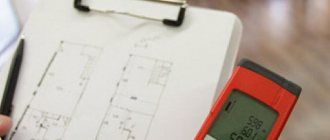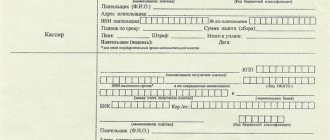When deciding to insure property, an insurance contract is concluded between an individual or legal entity (the policyholder) and the insurance company (the insurer). An annex to such a document is often an assessment and inspection report of the property. It is necessary to determine the actual condition and establish the value of the object. Let's look at how to compose it.
- Form and sample
- Free download
- Online viewing
- Expert tested
FILES
New requirements for non-financial assets of an institution
One of the innovations in the requirements of the current legislation for the organization of accounting in state (municipal) institutions from 01/01/2018 was the requirement of the FSBU “Conceptual framework for accounting and reporting of public sector organizations”, approved by Order of the Ministry of Finance of the Russian Federation dated 12/31/2016 No. 256n (hereinafter referred to as the FSBU “ Conceptual Framework"), measuring and revaluing non-financial assets of institutions in certain cases at fair value. At the same time, in accordance with the requirements of the FSBU “Lease”, approved by Order of the Ministry of Finance of the Russian Federation dated December 31, 2016 No. 258n, taking into account the amount of fair value, property received under operating lease, non-operating (financial) lease (leasing) or gratuitous use (term and unlimited), which from 01/01/2018 is already reflected in the balance sheet accounts of the non-financial assets of the institution. And finally, in accordance with the requirements of the FSBU “Impairment of Assets”, approved by Order of the Ministry of Finance of the Russian Federation dated December 31, 2016 No. 259n, in addition to the previously existing procedure for revaluing the property of state (municipal) institutions, by decision of the Government of the Russian Federation, from 01.01.2018, impairment losses must be reflected in the accounting records of institutions non-financial assets on their balance sheet (in terms of fixed assets, as well as intangible and non-produced assets).
In connection with the above, accounting employees of state (municipal) institutions face questions related to determining the fair value of an accounting item that require clarification.
general information
The insurer's right to assess property during insurance is secured by Art. 945 of the Civil Code of the Russian Federation. The procedure is carried out by the company’s in-house appraiser, or this task is entrusted to a special organization engaged in appraisal. The value of the object will determine the insurance portfolio and the amount of compensation if an insured event occurs.
Important! The act is an annex to the insurance contract, so in itself it will not have legal force. Documents must be kept together.
There is no legally approved form for the act; insurance companies develop the forms independently. The document must include all the details typical for papers of this kind.
The act is drawn up in two copies - one for each of the parties. Accordingly, the document must bear the signatures of the insurer and the insured person.
Criteria for the procedure for assessing the value of assets and revaluation
In accordance with paragraph 52 of the Federal Budgetary Accounting Standards “Conceptual Framework”, the assessment of individual accounting items in cases provided for by regulatory legal acts governing accounting and preparation of accounting (financial) statements is carried out at fair value - in an assessment corresponding to the price at which it can transfer of ownership of the asset between independent parties to the transaction who are aware of the subject of the transaction and wish to complete it. Thus, procedures for assessing the value of institutions’ assets from 01/01/2018 can be carried out primarily based on the use of market criteria, which, according to the Federal Accounting Standards “Conceptual Framework”, provide the following conditions:
– the parties (seller (transferring party) and buyer (copyright holder)) wishing to complete the transaction are informed about the main properties and characteristics of the transaction object (asset, liability), its actual and potential use, and the position of the buyer (copyright holder) in the market is not the reason to conclude a transaction on forced terms (clause “a”, clause 58); – the seller (transferring party) is interested in selling (transferring) the subject (object) of the transaction on market conditions at the best price that can be obtained (paid), but is not a seller willing to hold the subject of the transaction until receiving a price offer that is not justified at the current time market conditions (clause “b”, clause 58); – a fact of economic life (operation, event, transaction) is carried out between unrelated parties, each of which acts independently, that is, the parties to the transaction (seller (transferring party) and buyer (copyright holder)) are not connected by relationships, as a result of which atypical market conditions are established prices (clause “c” clause 58); – when determining the fair value of an asset, documented data on market prices are used, received by the accounting entity from independent experts (appraisers) or generated by the accounting entity independently by studying market prices in the public domain (clause 59); – when determining the fair value of an asset, possible (estimated) transaction costs associated with the sale or other form of disposal of an asset or the transfer of a liability are not taken into account (clause 60).
When and why is a car appraisal required?
We will try to briefly list the reasons for assessing vehicles:
- assessment at the request of notarial authorities for inheritance purposes
- valuation for the purpose of the upcoming purchase and sale of a car
- assessment for the purpose of placing (removing) from the balance sheet of an enterprise
In turn, the main types of assessment should be listed:
- assessment of the market value of a car
- assessment of the residual value of the car (its parts)
- assessment of the salvage value of a car
Cases of determining the fair value of an asset
According to the requirements of Instruction No. 157n, adjusted in accordance with the Federal Financial Accounting Standards “Conceptual Framework”, the assessment (revaluation) of non-financial assets taking into account their fair value should be carried out in the following cases:
– receipt of objects of non-financial assets under agreements providing for the fulfillment of obligations (payment) in non-monetary funds (clause 24 of Instruction No. 157n) or as a result of non-exchange transactions (free of charge, including under agreements of gift or gratuitous use) (clause 25 of Instruction No. 157n) ; – impairment of objects (groups of objects) of non-financial assets in accordance with the requirements of the Federal Accounting Standards Service “Impairment of Assets” due to a decrease in the size of their current fair value below that reflected in the accounting records of the institution; – alienation of fixed assets, intangible assets, non-produced assets and inventories (except for finished products and goods) not in favor of public sector organizations (clause 28 of Instruction No. 157n).
Taking into account the fact that from 01/01/2018 in the accounting of state (municipal) institutions, the composition of non-financial assets began to reflect the rights of use arising under agreements of non-operating (financial) lease, operating lease and gratuitous use of fixed assets and non-produced assets, the fair value of such objects accounting must be determined similarly to other non-financial assets.
How can I challenge the results of a car appraisal?
If you are faced with an unreliable assessment of a vehicle, you have at least two options for appealing the results of the initial assessment as unreliable.
- The first and perhaps the simplest response option is, of course, an alternative assessment of the same car, which can be carried out at any disinterested appraisal company.
- The second response option is to conduct a review of the results of the initial assessment report. The review opinion can be used either as an independent document, or together with a complaint about the actions of the appraiser, contact the supervisory body of the relevant self-regulatory organization of appraisers.
- The third option for challenging a car assessment report is the so-called “Examination of the assessment report”. To carry out this procedure, you are required to personally file a complaint with the self-regulatory organization (SRO) of appraisers, where the appraiser specialist is registered.
- The fourth way to respond to an unreliable assessment report is a forensic assessment examination, however, unfortunately, the judicial option for reviewing assessment results is rather optional and is of little use in practice.
Formation of the cost of the object
Changes in the valuation indicators of non-financial assets of state (municipal) institutions since 01/01/2018 can be shown in the following table:
| Conditions for obtaining NFA | Until 01/01/2018 | After 01/01/2018 | ||
| FSBU “Conceptual framework”, “Lease”, “Impairment of assets” | ||||
| Acquisition as a result of exchange transactions (purchase and sale, barter, etc.) | At the original (actual) cost, including all costs associated with delivering the NFA to the institution and bringing it to a state suitable for use for its intended purpose | |||
| Reflection in accounting - on the balance sheet accounts of non-fiscal assets (0 101 00 000, 0 102 00 000, 0 103 00 000, 0 105 00 000) | ||||
| Free receipt of property from public sector organizations (allocation of property, intradepartmental movement of property, centralized supply (purchase), etc.), as well as transfer of property to these organizations | At original cost, taking into account accrued depreciation | |||
| Reflection in accounting - on the balance sheet accounts of non-fiscal assets (0 101 00 000, 0 102 00 000, 0 103 00 000, 0 105 00 000) | ||||
| Free receipt from organizations of the non-state sector or internal reserves (donation, capitalization of previously unaccounted for property, etc.), as well as transfer of property to these organizations | At the current estimated (market) value, based on the cost of acquiring similar property under similar conditions | At fair value | ||
| Reflection in accounting - on the balance sheet accounts of non-fiscal assets (0 101 00 000, 0 102 00 000, 0 103 00 000, 0 105 00 000) | ||||
| Receiving a non-operating (financial) lease (leasing) | At the actual cost of the property specified in the leasing agreement | At the initial cost, including costs directly related to the conclusion of the leasing agreement, the total amount of lease payments for the entire period of its validity minus the total amount of interest accrued by the lessor (taking into account its discounting) | ||
| At fair value - if the cost of purchase on similar terms in the same region exceeds the amount of interest expenses (rent) for the entire period of use of the property (that is, the leasing agreement was actually concluded on preferential terms) | ||||
| Reflection in accounting - on off-balance sheet account 01 | Reflection in accounting - on the balance sheet account 0 111 00 000 (in terms of the use of fixed assets and non-produced assets) or on the off-balance sheet account 01 (in terms of the use of intangible assets) | |||
| Obtaining an operating lease | At the actual value of the property specified in the lease agreement | At the original cost, in the amount of interest expenses (rent) for the entire period of use of the property stipulated by the lease agreement (excluding costs associated with concluding a lease agreement and conditional lease payments to reimburse utility and other operating costs) | ||
| At a conditional price “one object – one ruble” - in cases where the actual cost of the property is not indicated in the lease agreement | At fair value - if the cost of purchase on similar terms in the same region exceeds the amount of interest expenses (rent) for the entire period of use of the property (that is, the leasing agreement was actually concluded on preferential terms) | |||
| Reflection in accounting - on off-balance sheet account 01 | Reflection in accounting - on balance sheet account 0 111 00 000 (in terms of the use of fixed assets and non-produced assets) or on off-balance sheet account 01 (in terms of the use of intangible assets and rights to limited use of other people's land plots (easements) *) | |||
| Receipt for free use | At the current assessed value, based on the cost of acquiring similar property under similar conditions | At fair value | ||
| Reflection in accounting - on off-balance sheet account 01 “Property received for use” | Reflection in accounting - on balance sheet account 0 111 00 000 (in terms of the use of fixed assets and non-produced assets) or on off-balance sheet account 01 (in terms of the use of intangible assets and rights to use land plots until their state registration is completed) | |||
| Periodic revaluation of fixed assets according to decisions of the Government of the Russian Federation, as well as bringing the book value of land plots assigned to the institution for permanent (perpetual) use to the current cadastral value | At the current revalued value, based on the revaluation indicators reported by the Government of the Russian Federation, taking into account the amount of accrued depreciation of fixed assets revalued at the time of revaluation, as well as based on the current cadastral value of land plots assigned to the institution for permanent (perpetual) use | |||
| Reflection in accounting - on the balance sheet accounts of non-fiscal assets (0 101 00 000, 0 102 00 000, 0 103 00 000) | ||||
| Periodic impairment of fixed assets, intangible and non-produced assets | – | The difference in excess of an asset's carrying amount over its fair value | ||
| – | Reflection in accounting - on the balance sheet account 0 114 00 000 “Impairment of assets” | |||
| Disposal of property for other reasons (loss, theft, etc.) | At the estimated cost of their replacement, based on market prices prevailing in the area on the day the damage was caused, but not lower than the value of the property according to accounting data, taking into account the depreciation of this property accrued at the time of loss | At fair value | ||
| Reflection in accounting - on the corresponding balance sheet or off-balance sheet accounts of this property | ||||
*By virtue of Art. 274 of the Civil Code of the Russian Federation, an easement can be established by agreement between an institution and the owner of a neighboring land plot to ensure passage and passage through the neighboring land plot, construction, reconstruction and (or) operation of linear objects that do not interfere with the use of the land plot in accordance with the permitted use, as well as other the needs of the owner of real estate, which cannot be provided without the establishment of an easement. The easement is subject to registration in the manner established for registration of rights to real estate. The cost of an easement is determined by the fee established by agreement between the parties who entered into it, or by the court, for the use of the easement, but within the limits of the cadastral value of the corresponding land plot (in this case, the fee for the use of the easement is included in the current costs of the institution as it is implemented).
Thus, with the entry into force of federal accounting standards for public sector organizations on January 1, 2018, the procedure for the initial assessment of non-financial assets has become more market-based in nature, and the list of cases of application of their subsequent assessment (impairment) has noticeably expanded.
We draw up a property valuation report under an insurance contract
The first step should be an indication that this act is an annex to the insurance contract. The number and date of the agreement must be indicated. Next, write the name of the act, the place and date of its preparation.
Then the main part of the document begins. Write the names of the parties, again the number and date of the agreement and the essence of the act being drawn up (inspection and assessment of the property). After this, you need to enter information about the object. It is more convenient to arrange the description in the form of a table with the following columns, especially if there are several objects of property:
- Name of the insurance object.
- Characteristics of the insurance object. If the object is an apartment or office space, then you will need to indicate the address, floor, number of rooms (offices), area, features of the external condition, communications, etc. For a land plot, indicate the location, area, cadastral number, purpose, whether there are buildings on it and what kind. For a car - make, license plate, year of manufacture, registration details, etc.
- Estimated cost in rubles.
After the table indicate the date on which the assessment was made. And then the insurer and the policyholder put their signatures.
Cases of valuation legislation
The peculiarities of the current legislation on valuation activities do not actually make a distinction between appraisers based on their basic higher education.
For example, people who are very, very far from engineering can get into the appraiser profession.
In practice, we have met appraisers with basic musical, medical, legal, pedagogical and even art history education, which, unfortunately, very, very often calls into question the results of car appraisals.








